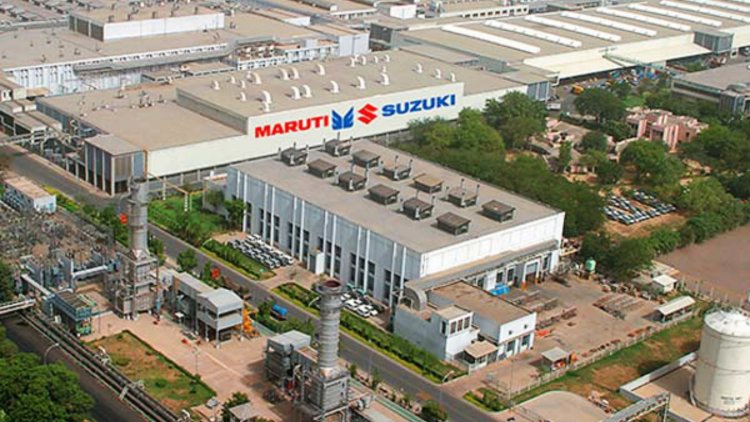Maruti Suzuki to build a new manufacturing plant to meet the rising demand for vehicles
Revving up to meet the demand! Maruti Suzuki announces plans for a new manufacturing plant to keep up with the growing need for vehicles

In New Delhi: Maruti Suzuki India Limited (MSIL), the largest automaker in the nation, announced on Wednesday that it is considering building a new plant to increase its production capacity by up to 10 lakh units annually. Along with that, a new facility is being built at Kharkhoda in Sonipat, Haryana.
By 2030, our export volumes could contact as broadly as three-quarters of a million cars, which is similar to the present capacity of the entire Suzuki Gujarat plant," said RC Bhargava, Chairman of Maruti Suzuki. In order to meet the demand for vehicles both domestically and abroad, even if we use the full 1 million vehicles that the Kharkhoda plant is capable of producing over the next eight years, we will still need more vehicles.
Depending on market demand, the new plant will be gradually expanded. We will make every effort to move the Kharkhoda plant along as quickly as we can, but work will also be done at the other site at the same time, he said during the FY23 earnings call. During the current fiscal year, the company has close to 8,000 crores in planned capex.
Read more: MG Comet EV Unveiled: Specs, Range, and Competitors
The creation of this additional capacity has received the board of the company's approval in principle. The new plant's precise location and the amount of funding it will receive have not yet been decided. Maruti stated that internal accruals will be used to pay for it and that investment will likely be "slightly higher than the Kharkhoda plant as this will be coming later."
After its two plants in Haryana, Manesar, and Gurugram, its upcoming plant in Kharkhoda, and Suzuki's plant in Gujarat, which is under contract manufacturing agreement, the new location will be the automaker's fifth manufacturing facility. In Rohtak, Maruti Suzuki also maintains an R&D facility. Additionally, the Toyota Kirloskar Motor (TKM) facility in Bidadi, Karnataka, is where it obtains vehicles (Grand Vitara).
In Kharkhoda, Maruti began construction on its upcoming 800-acre plant last year. The facility has room to grow and will need a total investment of INR 18,000 crore before it reaches its maximum production capacity of 10 lakh units. With a production capacity of 2.5 lakh units, Maruti has invested INR 11,000 crore in the first phase.
The Kharkhoda plant is expected to start up in two phases: the first phase in 2025 and the second phase in the latter half of 2026. To meet the demand in the domestic and export markets, the plant is designed for expansion.
The Kharkhoda plant won't support the production of electric vehicles, ETAuto reported in May of last year.
Suzuki Motor Corporation (SMC), Maruti Suzuki's parent company, is in charge of localizing EV batteries. "In Gujarat, our EV event is always happening. The EV and the battery plant should be as close to one another as possible because EV batteries are heavy and can be expensive to transport. Japan Suzuki is already operating on this.
Releases of new vehicles
A premium 7-seater strong hybrid vehicle will be released by Maruti as part of Suzuki's ongoing partnership with Toyota. It is anticipated to debut by June or July of this year and will probably be based on the Toyota Innova Hycross.
"We will purchase a vehicle from Toyota, which is a 3-row powerful hybrid and the most expensive model available. Although the volumes won't be very large, it will be a game-changer, according to Bhargava.
The car manufacturer revealed that Toyota Kirloskar has a 12-month backlog of orders for this particular model in India.
By 2030, Suzuki will also release 6 EV models. It was previously reported that the eVX, which will be unveiled at the Auto Expo, will be the first BEV on the domestic market. By the end of this decade, the company said it wants to reach a powertrain ratio of 15% BEVs, 25% HEVs, and 60% hybrids.
Although we are gradually expanding into other categories, the EVs will primarily fall under the SUV category. We also keep experimenting with various technologies to see which ones are most appropriate for Indian conditions, according to Bhargava.
According to each government's deadline, the automaker wants to become carbon neutral in Japan, Europe, and India by 2050 and 2070, respectively.
Suggested: All New Maruti Suzuki FRONX: Specs, Features, Variants, and Competitors
Flat pricing for entry-level vehicles
In the passenger vehicle market today, SUV sales account for about 43% of total sales.
Swift and WagonR's manufacturer predicted that this year's small car sales would be flat, with no notable growth. The viewpoint for small cars is yet mostly unfavorable. The SUV market is unquestionably more robust. The market is moving in this direction, so we will follow suit.
The company also stopped making the Alto 800 in FY23.
Outlook- Maruti Suzuki sold 1,966,164 vehicles overall (domestic + exports) in FY23, marking the company's highest annual sales volume ever. This includes the highest-ever exports of 259,333 units and 1,706,831 units on the domestic market. The company's annual revenue has surpassed the INR 1 lakh crore mark, and its cash reserves are just over INR 45,000 crore.
In distinction to the INR 60 per share in FY 2021–2022, its Board of Directors advised the highest-ever bounty of INR 90 per share (face value of INR 5 per share).
The automaker missed selling two million units annually in FY23 by 34,000 units. A shortage of electronic components prevented the company from producing 170,000 units as planned.
On a strong base from FY23, the passenger vehicle industry is anticipated to grow by 5-6% annually. Maruti is optimistic, though, that it will surpass the 2-million-sale threshold and outperform industry growth in the current fiscal year. It currently has a 412,000-unit backlog of orders.
The automaker reported a consolidated net profit of 8,211 crores INR for FY23 as opposed to 3,879 crores INR for FY22. Likened to last year, the results for 2022–23 are greatly better. We have reached this point because the government and the RBI were able to control inflation in the economy in a way that allowed India to perform significantly better than other nations, according to the chairman of the company.













